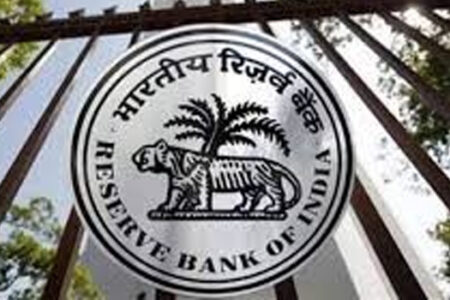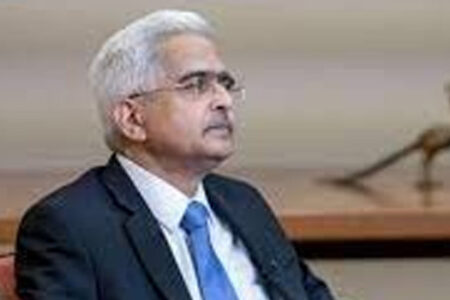India’s banking regulator is upset with the extreme risk aversion of commercial banks, which are holding back the flow of credit to the productive sectors of Asia’s third largest economy. This undermines the role of banks as the principal financial intermediary in the economy, the Reserve Bank of India (RBI) says.
However, the bankers have a different story to tell. They are not risk averse; they are just being prudent.
Who’s right? Probably, both. Bankers are not giving credit to those who are perceived to be capable of playing a role in pushing the economic growth and creating employment as they do not find them credit worthy. And those to whom the bankers are willing to lend are not asking for money.
At the root of the debate on risk averseness versus prudent banking is a belief that credit growth can push economic growth. Can it? Shouldn’t this be the other way round — industry asks for money from banks when it wants to invest, seeing the growing demand?
Historically, whenever bank credit has been used as a vehicle for economic growth, the banks have ended up piling bad assets. This had happened in the 1990s, post the economic liberalisation, and also in the recent past when after the global economic crisis, banks were encouraged to open their credit tap to all and sundry to fuel growth and insulate Indian economy from the impact of the crisis.
Cheap money flooded the system and bankers merrily gave away credit to undeserving borrowers who substituted equity with debt. Essentially, the banks ended up providing the risk capital. Their indiscretion was exposed after the RBI decided to conduct an asset quality review, the first-of-its-kind audit of banks’ books in financial year 2016. The bad loans ballooned and eleven public sector banks were restrained from giving fresh loans.
In mid-August, the deposit portfolio of the Indian banking system was a little over Rs 140 trillion, growing at 3.8 per cent over the past year. In contrast, the credit growth has been a negative 1.5 per cent. The overall credit portfolio was over Rs 102 trillion. In the last financial year ending March 2020, bank credit had grown at 6.1 per cent, less than half of the previous year’s growth (13.3 per cent).
The latest RBI data on credit flow to different sectors, based on the businesses of 33 large banks with 90 per cent share in bank credit, show that in May 2020 loans given to agriculture and allied activities grew at 3.5 per cent, down from 7.8 per cent in May 2019. During this period, the credit flow to industry had gone down much sharper – a growth of 1.7 per cent versus 6.4 per cent. Growth in loans to the services sector and personal loans, too, has dropped.
The only segment that is seeing loan growth is the micro, small and medium enterprises (MSMEs). The banks are giving MSMEs money as the repayment is guaranteed by the government under a scheme. But MSMEs alone cannot push up the credit growth as the banking sector’s exposure to this segment is less than one-fifth of the bank credit market. Barring MSMEs, a few road projects and some state-owned public sector undertakings are the only takers of bank credit at the moment. Most well-rated large industries to whom the banks would love to give credit are deleveraging – they are not asking for loans.
What are the banks doing with their money? They are parking it in the RBI’s reverse repo window and earning a measly 3.35 per cent interest. If there are opportunities to earn much more by giving loans, only the fools will settle for 3.35 per cent, and the bankers are no fools. They are doing this because the options are limited.
Yes, indeed some of the banks (primarily in private sectors) have been growing their loan books handsomely, but the story behind the growth is neither absence of risk averseness nor lack of prudency. They are smart and snatching away the corporate borrowers from the public sector peers by offering cheaper credit. Simply put, the overall credit pie is not growing but a few banks are eating into others’ credit books by repricing loans.
Some believe that the fear of being hounded by the investigating agencies is contributing to the banks’ lack of enthusiasm for giving fresh credit as all accounts exceeding Rs 50 crore, if classified as bad loans, must be examined by the banks through a forensic audit for possible fraud. This may not be true. Most banks have now been following the quantitative model for risk assessment, laced with qualitative inputs. The CEOs do not take the credit calls; credit committees do.
It is unfair to expect risk capital from the banks to prop up the economy. Once there is demand and industries are willing to invest to put up factories, keeping their equity on the table, the banks must give them credit. The demand will be created only after the consumers are convinced that the pandemic is being tamed. In our fight against Covid, the government has not exactly been covering itself with glory so far.
Parallelly, the eco system has to be created. I am not referring to the much discussed land and labour reforms, which ensure capital flow. There are other ways to do this. Last week, for instance, the Maharashtra government announced a cut in stamp duties and other levis for buying and selling properties in the state. It has cut stamp duty rates from 5 per cent to 2 per cent in urban areas till December 31, 2020, and 3 per cent till March 31, 2021. For rural Maharashtra, the stamp duty rates have been slashed from 4 per cent to 1 per cent till December 31 and 2 per cent till March 31.
This will help bolster demand for buying homes and many developers may reach out to banks for money to complete projects. The banks are sure to come forward to lend to the deserving property developers.
The buck stops with the government, not the banks. It’s unfair to expect them to be adventurous with public money. Besides, the banks themselves need capital. Most private banks have raised capital from the market in the past few months but the government has not said anything for public sector banks. The RBI’s annual report has harped on recapitalisation of banks as their current capital will not be enough to absorb the post-pandemic losses. The bad loans of Indian banking system will grow substantially, the regulator has warned.



